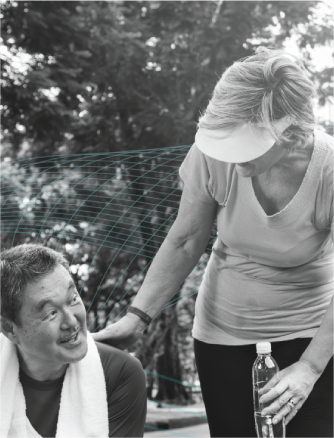Healthcare providers have always relied on data sets to make decisions, from feeling a pulse to taking a PET scan of the brain. Information today offers huge potential to advance healthcare. Bigger data sets mean better accuracy. With remote monitoring, we can access real-time updates which can mean the difference between life and death for patients with chronic conditions such as heart disease or diabetes. Yet providers are literally buried in data. How do we harness and provide clinical data to physicians so they can take full advantage of it for the patient?
Structure Information to the Need
Can there be too much information? Yes. An entire set of Yellow Pages isn’t helpful when you can’t quickly find the one business number you need. The same applies for medicine. There is more data than healthcare organizations can consume. Physicians receive extensive reports with details and minutiae when they need a summarized report with key pieces relating to the clinical value for their patients. Instead of six months of blood glucose data, the physician wants to know the best days, worst days and the average for the diabetic patient. Likewise, with ECG data for a heart patient.
Sharing Data Between Care Team Members
Information overload also undermines hospitals working to improve patient outcomes. As specialists from different departments collaborate, large data sets are shared across departments and even hospital systems. If you have a cancer patient who is also diabetic, his GP, oncologist and endocrinologist each get summaries from the other as they strive to create a cohesive team. An entire care team of specialists participating in one case is fraught with the challenge of sharing data. Each specialist needs a different piece of the pie.
Population Health Improvement
When hospitals analyze outcomes from specific illnesses to improve population health, they need to know generalities. What are the best outcomes among patients with diseases such as diabetes or prostate cancer? What are the worst? What are the differences in general between cases? What is the average? How do we move that average up? These are questions population health specialists deal with as they wrestle with massive data sets in specific illnesses.
Overall, there is too much data floating around in non-useful forms. We need to figure out how to effectively collect, manage, distribute, and utilize it. Summarizing key points and getting that information to the right people at the right time will enable better collaboration between hospitals, physicians and patients. This is essential to advance healthcare. And this is what the industry needs to provide.
At Biotricity, our goal is to provide best-in-class wearable medical devices that give healthcare providers real-time, summarized updates on their patients’ chronic conditions such as heart disease and diabetes.
We are working to collect better data on individual patients and to summarize the information so the physician has quick access. We strive to provide the benefits of a longer data set without the necessity of sifting through it for answers. We consult with doctors during every step of our product development to ensure we capture the right data and produce useful reports that aren’t overwhelming to physicians. Our approach fosters a cohesive medical network across specialties and systems. Instead of adding to the problem of too much data, we strive to funnel important information into meaningful reports that provide answers physicians need.
Sources:
http://medcitynews.com/2014/03/big-data-healthcare-pros-cons-remote-patient-monitoring/






